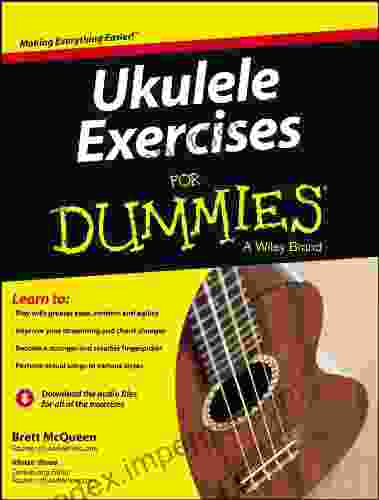Say Again Please: Your Essential Guide to Radio Communications

Radio communications is the transmission of information over a distance using radio waves. Radio waves are a type of electromagnetic radiation, which are generated by the vibration of electrons. When an antenna is connected to a radio transmitter, the transmitter sends out radio waves that carry the information in the form of a signal. The signal is received by another antenna, which is connected to a radio receiver. The receiver decodes the signal and produces the information in a form that can be understood by the user.
Radio communications is used in a wide variety of applications, including:
- Communication between aircraft and ground control
- Communication between ships and shore
- Communication between emergency responders
- Communication between businesses and their employees
- Communication between people in remote locations
There are many different types of radio communication, each with its own strengths and weaknesses. Some of the most common types of radio communication include:
4.6 out of 5
| Language | : | English |
| File size | : | 13345 KB |
| Text-to-Speech | : | Enabled |
| Screen Reader | : | Supported |
| Enhanced typesetting | : | Enabled |
| Print length | : | 240 pages |
| Lending | : | Enabled |
- AM (Amplitude Modulation): AM is a type of radio communication that uses the amplitude of the radio waves to carry the information. AM is simple and inexpensive to implement, but it is also susceptible to noise and interference.
- FM (Frequency Modulation): FM is a type of radio communication that uses the frequency of the radio waves to carry the information. FM is more resistant to noise and interference than AM, but it is also more complex and expensive to implement.
- SSB (Single Sideband): SSB is a type of radio communication that uses only one sideband of the radio waves to carry the information. SSB is more efficient than AM or FM, but it is also more complex and expensive to implement.
- Digital Radio: Digital radio is a type of radio communication that uses digital signals to carry the information. Digital radio is more resistant to noise and interference than analog radio, and it can also offer a wider range of features.
The type of radio equipment that you need will depend on the type of radio communication that you are using. Some of the most common types of radio equipment include:
- Transceivers: Transceivers are devices that can both transmit and receive radio signals. Transceivers are used in a wide variety of applications, including communication between aircraft and ground control, communication between ships and shore, and communication between emergency responders.
- Receivers: Receivers are devices that can only receive radio signals. Receivers are used in a variety of applications, including listening to music, news, and weather reports.
- Transmitters: Transmitters are devices that can only transmit radio signals. Transmitters are used in a variety of applications, including communication between aircraft and ground control, communication between ships and shore, and communication between emergency responders.
- Antennas: Antennas are devices that are used to transmit and receive radio signals. Antennas come in a variety of shapes and sizes, and they are designed to be used in specific frequency ranges.
Radio procedures are the rules and conventions that govern the use of radio communications. Radio procedures help to ensure that radio communications are safe, efficient, and reliable. Some of the most common radio procedures include:
- Call signs: Call signs are unique identifiers that are assigned to radio stations. Call signs are used to identify a radio station when it is transmitting or receiving.
- Frequencies: Frequencies are the specific ranges of the radio spectrum that are allocated for different types of radio communication. Frequencies are assigned by the government, and they help to prevent interference between different types of radio communications.
- Channel plans: Channel plans are lists of frequencies that are assigned to different types of radio communication in a specific area. Channel plans help to ensure that radio communications are efficient and reliable.
If you are experiencing problems with your radio communication, there are a few things you can do to troubleshoot the problem. First, check to make sure that your radio equipment is properly connected and configured. Next, try to identify the source of the problem by listening to the radio signals. If you hear a lot of noise or interference, it is likely that the problem is with your antenna or your receiver. If you hear a clear signal but you are unable to communicate with the other party, it is likely that the problem is with your transmitter.
If you are unable to troubleshoot the problem on your own, you can contact a qualified radio technician for assistance.
Radio communications is a powerful tool that can be used for a variety of applications. By understanding the basics of radio communications and by following the proper procedures, you can use radio communications to stay connected, to get help in an emergency, and to enjoy a variety of entertainment options.
4.6 out of 5
| Language | : | English |
| File size | : | 13345 KB |
| Text-to-Speech | : | Enabled |
| Screen Reader | : | Supported |
| Enhanced typesetting | : | Enabled |
| Print length | : | 240 pages |
| Lending | : | Enabled |
Do you want to contribute by writing guest posts on this blog?
Please contact us and send us a resume of previous articles that you have written.
 Book
Book Novel
Novel Page
Page Chapter
Chapter Text
Text Story
Story Genre
Genre Reader
Reader Library
Library Paperback
Paperback E-book
E-book Magazine
Magazine Newspaper
Newspaper Paragraph
Paragraph Sentence
Sentence Bookmark
Bookmark Shelf
Shelf Glossary
Glossary Bibliography
Bibliography Foreword
Foreword Preface
Preface Synopsis
Synopsis Annotation
Annotation Footnote
Footnote Manuscript
Manuscript Scroll
Scroll Codex
Codex Tome
Tome Bestseller
Bestseller Classics
Classics Library card
Library card Narrative
Narrative Biography
Biography Autobiography
Autobiography Memoir
Memoir Reference
Reference Encyclopedia
Encyclopedia Edward Hampshire
Edward Hampshire Bruce Lansky
Bruce Lansky Dan Emmett
Dan Emmett Mustafa Akyol
Mustafa Akyol Brian M Mccall
Brian M Mccall Brian Van Brunt
Brian Van Brunt Bonnie St John
Bonnie St John Brad Roberts
Brad Roberts Nikki Sixx
Nikki Sixx Ran Abramitzky
Ran Abramitzky Vadim Issakov
Vadim Issakov Richard Kendall
Richard Kendall Jay Mitchell
Jay Mitchell Brant Hansen
Brant Hansen Eishi H Ibe
Eishi H Ibe David Margolick
David Margolick Kazuo Kobayashi
Kazuo Kobayashi Brink Lindsey
Brink Lindsey E C Coleman
E C Coleman Michele Sabad
Michele Sabad
Light bulbAdvertise smarter! Our strategic ad space ensures maximum exposure. Reserve your spot today!

 Vladimir NabokovUkulele Exercises For Dummies: Your Ultimate Guide to Mastering the Ukulele
Vladimir NabokovUkulele Exercises For Dummies: Your Ultimate Guide to Mastering the Ukulele
 Brennan BlairMake Your Boomer Parents Do This Now: The Essential Guide to Protecting Your...
Brennan BlairMake Your Boomer Parents Do This Now: The Essential Guide to Protecting Your...
 Fletcher MitchellUnlocking the Value of Forests: A Comprehensive Guide to Selling Forest...
Fletcher MitchellUnlocking the Value of Forests: A Comprehensive Guide to Selling Forest... Gavin MitchellFollow ·9.8k
Gavin MitchellFollow ·9.8k Henry JamesFollow ·9.6k
Henry JamesFollow ·9.6k Cody RussellFollow ·6k
Cody RussellFollow ·6k Rob FosterFollow ·12.3k
Rob FosterFollow ·12.3k J.R.R. TolkienFollow ·2.8k
J.R.R. TolkienFollow ·2.8k Fernando PessoaFollow ·13.4k
Fernando PessoaFollow ·13.4k Harrison BlairFollow ·15.2k
Harrison BlairFollow ·15.2k Francisco CoxFollow ·6.6k
Francisco CoxFollow ·6.6k

 Gary Cox
Gary CoxUnlocking Meaning and Purpose in Life: An Exploration of...
In an increasingly...

 Eric Hayes
Eric HayesMemoirs of the Early Pioneer Settlers of Ohio Illustrated
A Window into the Lives of Courageous...

 J.R.R. Tolkien
J.R.R. TolkienThe Montgomerys and Their Descendants: A Saga of Courage,...
Prepare to be...

 Avery Simmons
Avery SimmonsThe Rifle Musket: The Dawn of Modern Infantry Warfare
: The rifle musket, a revolutionary...

 Jesse Bell
Jesse BellUnlock the Power of Excel with VBA and Macros: A...
Microsoft Excel is a powerful spreadsheet...
4.6 out of 5
| Language | : | English |
| File size | : | 13345 KB |
| Text-to-Speech | : | Enabled |
| Screen Reader | : | Supported |
| Enhanced typesetting | : | Enabled |
| Print length | : | 240 pages |
| Lending | : | Enabled |







